
ANCIENT ALIEN THEORY
According to ancient alien theorists, extraterrestrials with superior knowledge of science and engineering landed on Earth thousands of years ago, sharing their expertise with early civilizations and forever changing the course of human history. But how did this concept develop, and is there any evidence to support it?
Ancient alien theory grew out of the centuries-old idea that life exists on other planets, and that humans and extraterrestrials have crossed paths before. The theme of human-alien interaction was thrust into the spotlight in the 1960s, driven by a wave of UFO sightings and popular films like 2001: A Space Odyssey. The space program played no small part in this as well: If mankind could travel to other planets, why couldn’t extraterrestrials visit Earth?
In 1968, the Swiss author Erich von Däniken published Chariots of the Gods?, which became an immediate bestseller. In it, he put forth his hypothesis that, thousands of years ago, space travelers from other planets visited Earth, where they taught humans about technology and influenced ancient religions. He is regarded by many as the father of ancient alien theory, also known as the ancient astronaut theory.
Most ancient alien theorists, including von Däniken, point to two types of evidence to support their ideas. The first is ancient religious texts in which humans witness and interact with gods or other heavenly beings who descend from the sky—sometimes in vehicles resembling spaceships—and possess spectacular powers. The second is physical specimens such as artwork depicting alien-like figures and ancient architectural marvels like Stonehenge and the pyramids of Egypt.
If aliens visited Earth in the past, could they make an appearance in the future? For ancient alien theorists, the answer is a resounding yes. They believe that, by sharing their views with the world, they can help prepare future generations for the inevitable encounter that awaits them.
EVIDENCE OF ANCIENT ALIENS?
Ancient alien theorists like Erich von Däniken believe that, thousands of years ago, extraterrestrials landed on Earth, where they were hailed as gods and helped shape human civilization. But what proof could possibly exist for such an encounter? Proponents of the theory point to two types of evidence: ancient religious texts and physical specimens such as cave drawings, stone sculptures and pyramids. Is your curiosity piqued? Here’s a quick introduction to some of the most famous examples.

The Nazca Lines
Etched into a high plateau in Peru’s Nazca Desert, a series of ancient designs stretching more than 50 miles has baffled archaeologists for decades. Along with simple lines and geometric shapes, they include drawings of animals, birds and humans, some measuring more than 600 feet across. Because of their colossal size, the figures can only be appreciated from way up in the air—and there is no evidence that the Nazca people, who inhabited the area between 300 B.C. and 800 A.D., invented flying machines. According to ancient alien theorists, the figures were used to guide spaceships as they came in for a landing, and the lines served as runways.

Vimanas
Many Sanskrit epics, which were written in India more than two millennia ago, contain references to mythical flying machines called vimanas. Pointing to similarities between descriptions of vimanas and reports by people who claim to have seen UFOs, ancient alien theorists have suggested that astronauts from other planets visited India during ancient times.

The Moai of Easter Island
The Polynesian island of Easter Island is famous for its “maoi”: the 887 giant human figures with enormous heads that guard its coastline. Roughly 500 years old, these monolithic statues stand 13 feet high and weigh 14 tons, but some are twice as tall and much heavier. How could human beings without sophisticated tools or knowledge of engineering craft and transport such incredible structures? Some ancient alien theorists believe it is the work of visiting extraterrestrials who left their mark on the island.

Puma Punku
Located in the Bolivian highlands, Puma Punku is a field of stone ruins scattered with giant, finely carved blocks. Such precise workmanship on a massive scale would have been nearly impossible without modern tools and machines, yet the ruins are more than 1,000 years old. Ancient alien theorists have hypothesized that extraterrestrials with advanced engineering techniques created the site or advised the people who built it.

The Book of Ezekiel
In the Book of Ezekiel, part of the Hebrew bible, a prophet has a vision of a flying vessel accompanied by fire, smoke and a loud noise. Some ancient alien theorists have argued that the vehicle’s design closely mirrors that of a modern spaceship. Rather than a divine intervention, then, perhaps the text describes an early encounter between humans and alien astronauts.

Pacal’s Sarcophagus
Pacal the Great ruled over the Mayan city of Palenque, in what is now southern Mexico, during the seventh century. Upon his death, he was buried inside a pyramid called the Temple of Inscriptions. The intricately carved lid of his sarcophagus has become a classic work of Mayan art—and an oft-cited piece of evidence for ancient alien theorists. In their view, Pacal is pictured in a spaceship during takeoff, with his hand on a control panel, his foot on a pedal and an oxygen tube in his mouth.
Ancient alien theory grew out of the centuries-old idea that life exists on other planets, and that humans and extraterrestrials have crossed paths before. The theme of human-alien interaction was thrust into the spotlight in the 1960s, driven by a wave of UFO sightings and popular films like 2001: A Space Odyssey. The space program played no small part in this as well: If mankind could travel to other planets, why couldn’t extraterrestrials visit Earth?
In 1968, the Swiss author Erich von Däniken published Chariots of the Gods?, which became an immediate bestseller. In it, he put forth his hypothesis that, thousands of years ago, space travelers from other planets visited Earth, where they taught humans about technology and influenced ancient religions. He is regarded by many as the father of ancient alien theory, also known as the ancient astronaut theory.
Most ancient alien theorists, including von Däniken, point to two types of evidence to support their ideas. The first is ancient religious texts in which humans witness and interact with gods or other heavenly beings who descend from the sky—sometimes in vehicles resembling spaceships—and possess spectacular powers. The second is physical specimens such as artwork depicting alien-like figures and ancient architectural marvels like Stonehenge and the pyramids of Egypt.
If aliens visited Earth in the past, could they make an appearance in the future? For ancient alien theorists, the answer is a resounding yes. They believe that, by sharing their views with the world, they can help prepare future generations for the inevitable encounter that awaits them.
EVIDENCE OF ANCIENT ALIENS?
Ancient alien theorists like Erich von Däniken believe that, thousands of years ago, extraterrestrials landed on Earth, where they were hailed as gods and helped shape human civilization. But what proof could possibly exist for such an encounter? Proponents of the theory point to two types of evidence: ancient religious texts and physical specimens such as cave drawings, stone sculptures and pyramids. Is your curiosity piqued? Here’s a quick introduction to some of the most famous examples.

The Nazca Lines
Etched into a high plateau in Peru’s Nazca Desert, a series of ancient designs stretching more than 50 miles has baffled archaeologists for decades. Along with simple lines and geometric shapes, they include drawings of animals, birds and humans, some measuring more than 600 feet across. Because of their colossal size, the figures can only be appreciated from way up in the air—and there is no evidence that the Nazca people, who inhabited the area between 300 B.C. and 800 A.D., invented flying machines. According to ancient alien theorists, the figures were used to guide spaceships as they came in for a landing, and the lines served as runways.

Vimanas
Many Sanskrit epics, which were written in India more than two millennia ago, contain references to mythical flying machines called vimanas. Pointing to similarities between descriptions of vimanas and reports by people who claim to have seen UFOs, ancient alien theorists have suggested that astronauts from other planets visited India during ancient times.

The Moai of Easter Island
The Polynesian island of Easter Island is famous for its “maoi”: the 887 giant human figures with enormous heads that guard its coastline. Roughly 500 years old, these monolithic statues stand 13 feet high and weigh 14 tons, but some are twice as tall and much heavier. How could human beings without sophisticated tools or knowledge of engineering craft and transport such incredible structures? Some ancient alien theorists believe it is the work of visiting extraterrestrials who left their mark on the island.

Puma Punku
Located in the Bolivian highlands, Puma Punku is a field of stone ruins scattered with giant, finely carved blocks. Such precise workmanship on a massive scale would have been nearly impossible without modern tools and machines, yet the ruins are more than 1,000 years old. Ancient alien theorists have hypothesized that extraterrestrials with advanced engineering techniques created the site or advised the people who built it.

The Book of Ezekiel
In the Book of Ezekiel, part of the Hebrew bible, a prophet has a vision of a flying vessel accompanied by fire, smoke and a loud noise. Some ancient alien theorists have argued that the vehicle’s design closely mirrors that of a modern spaceship. Rather than a divine intervention, then, perhaps the text describes an early encounter between humans and alien astronauts.

Pacal’s Sarcophagus
Pacal the Great ruled over the Mayan city of Palenque, in what is now southern Mexico, during the seventh century. Upon his death, he was buried inside a pyramid called the Temple of Inscriptions. The intricately carved lid of his sarcophagus has become a classic work of Mayan art—and an oft-cited piece of evidence for ancient alien theorists. In their view, Pacal is pictured in a spaceship during takeoff, with his hand on a control panel, his foot on a pedal and an oxygen tube in his mouth.
AUTHOR
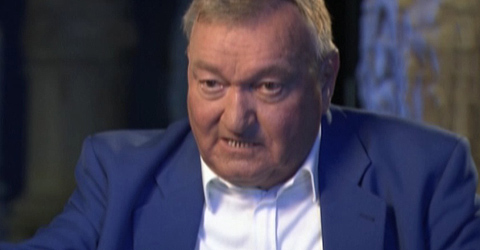
Erich von Däniken
Born in Switzerland in 1935, Erich von Däniken is widely regarded as the father of ancient alien theory, also known as ancient astronaut theory. He published his first of 26 books in 1968 while working as the manager of a five-star hotel. In Chariots of the Gods?, Däniken put forth his controversial hypothesis that, thousands of years ago, space travelers from other planets visited Earth, where they taught humans about technology and influenced ancient religions. As evidence, he pointed to religious texts in which heavenly beings with supernatural powers descend from the sky. He also suggested that extraterrestrials with superior knowledge of engineering helped ancient civilizations build architectural marvels like Stonehenge, the Great Pyramid of Giza and the Maoi statues of Easter Island.
Chariots of the Gods? appeared at a time when aliens and space travel loomed large in film, fiction and popular culture. It was the era of 2001: A Space Odyssey, Star Trek and Frank Herbert's Dune series. Däniken's ideas thrived in this climate, and his book became an immediate bestseller in the United States and Germany. It can now be read in more than 30 languages and has seen 40 printings to date. Over the years, Däniken has attracted a large group of followers, many of whom have conducted and published their own research, although he has also received criticism from some within the scientific community.
For more than four decades, Erich von Däniken has been writing and speaking about the notion that mankind and aliens crossed paths in the distant past. His work has inspired documentary features and television specials while capturing the imaginations of multiple generations of people around the world.

ABOUT THE UNIVERSE
From the planets to the stars and out to the edge of the unknown, history and science collide in HISTORY's popular series THE UNIVERSE, now back for its fourth season. With ground-breaking new discoveries and even more stunning high-definition computer animations, it's a wondrous yet deadly adventure through space and time. Fifty years have flown by since man first ventured into outer space, but the heavens are only now yielding their greatest secrets. Like the recent destructive impact on Jupiter reported to be by a comet or asteroid nearly the size of Earth, new phenomena are being discovered almost daily. Scientists are finding new planets and views into the deepest reaches of space, breaking new ground in understanding the universe and its mysteries. In this new season, viewers are transported to new and mysterious places including ones we didn't even know existed a year ago -- some harboring deadly forces that may forever impact life on Earth.
Learn more about Albert Einstein, whose work revolutionized humankind's understanding of the universe.

ABOUT THE SERIES
WWII in HD is the first-ever World War II documentary presented in full, immersive HD color. Culled from thousands of hours of lost and rare color archival footage gathered from a worldwide search through basements and archives, WWII in HD will change the way the world sees this defining conflict. Using footage never before seen by most Americans--converted to HD for unprecedented clarity—viewers will experience the war as if they were actually there, surrounded by the real sights and sounds of the battlefields. Along the way they'll meet a diverse group of soldiers whose wartime diaries and journals show in visceral detail what the war was really like.
This visually astonishing landmark series presents the story of World War II through the eyes of 12 Americans who experienced the war firsthand. Viewers will hear the story of Army nurse June Wandrey, who served from the beginning of the war in North Africa to the liberation of the camps in Germany. They will meet Shelby Westbrook, a young African American from Toledo, who became a member of the famed Tuskegee Airmen; Jimmie Kanaya, the son of Japanese immigrants, who served in the U.S. Army and was imprisoned in Europe; and Jack Werner, a Jewish émigré who escaped from Austria before the war and wound up fighting not against Hitler and the hated Nazis, but in the Pacific Theater.
This 10-hour series is narrated by Emmy Award winner Gary Sinise and voiced by some of Hollywood's top talents:
American film footage of the Second World War was captured primarily by motion picture cameramen assigned to Army, Navy, Marine Corps and Coast Guard signal photographic units. While this footage was captured mainly in black and white, some combat cameramen shot large quantities of color footage.
Some people may be surprised to learn that 16mm color film of the 1940s offers resolution that rivals the quality of today's high definition. Yet locating this footage for use in WWII in HD was often a challenge.
Many of these materials have changed hands over the years. They were in private collections or were donated to military museums—stored and forgotten.
Ultimately, the two-year, worldwide search paid off. Hundreds of hours were obtained of rarely- and never-seen footage, documenting activity in every theater of conflict for the war. Now they can be seen for the first time in decades, and in many cases, for the first time ever.
The material used for WWII in HD now represents one of the largest military film collections in the world. Footage in poor condition was painstakingly cleaned, digitally transferred, detail-logged and stored in preservation canisters. Even film in near-pristine condition could be improved (scratches removed, color corrected, detail enhanced) using modern technology.
The result is a treasure trove of unforgettable imagery, from pulse-pounding aerial combat sequences over Europe to heartwarming shots of a GI sharing water from his canteen with a frightened Japanese child to the truly chilling sight of Hitler playing with children and tousling their hair. It's all there onscreen: history reassembled, history preserved.
With WWII in HD, HISTORY has created a vividly presented canvas that paints the definitive portrait of World War II.
THEY WERE THERE
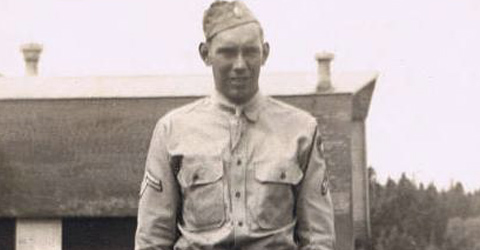
Archie Sweeney
Chariots of the Gods? appeared at a time when aliens and space travel loomed large in film, fiction and popular culture. It was the era of 2001: A Space Odyssey, Star Trek and Frank Herbert's Dune series. Däniken's ideas thrived in this climate, and his book became an immediate bestseller in the United States and Germany. It can now be read in more than 30 languages and has seen 40 printings to date. Over the years, Däniken has attracted a large group of followers, many of whom have conducted and published their own research, although he has also received criticism from some within the scientific community.
For more than four decades, Erich von Däniken has been writing and speaking about the notion that mankind and aliens crossed paths in the distant past. His work has inspired documentary features and television specials while capturing the imaginations of multiple generations of people around the world.

ABOUT THE UNIVERSE
From the planets to the stars and out to the edge of the unknown, history and science collide in HISTORY's popular series THE UNIVERSE, now back for its fourth season. With ground-breaking new discoveries and even more stunning high-definition computer animations, it's a wondrous yet deadly adventure through space and time. Fifty years have flown by since man first ventured into outer space, but the heavens are only now yielding their greatest secrets. Like the recent destructive impact on Jupiter reported to be by a comet or asteroid nearly the size of Earth, new phenomena are being discovered almost daily. Scientists are finding new planets and views into the deepest reaches of space, breaking new ground in understanding the universe and its mysteries. In this new season, viewers are transported to new and mysterious places including ones we didn't even know existed a year ago -- some harboring deadly forces that may forever impact life on Earth.
Learn more about Albert Einstein, whose work revolutionized humankind's understanding of the universe.

ABOUT THE SERIES
WWII in HD is the first-ever World War II documentary presented in full, immersive HD color. Culled from thousands of hours of lost and rare color archival footage gathered from a worldwide search through basements and archives, WWII in HD will change the way the world sees this defining conflict. Using footage never before seen by most Americans--converted to HD for unprecedented clarity—viewers will experience the war as if they were actually there, surrounded by the real sights and sounds of the battlefields. Along the way they'll meet a diverse group of soldiers whose wartime diaries and journals show in visceral detail what the war was really like.
This visually astonishing landmark series presents the story of World War II through the eyes of 12 Americans who experienced the war firsthand. Viewers will hear the story of Army nurse June Wandrey, who served from the beginning of the war in North Africa to the liberation of the camps in Germany. They will meet Shelby Westbrook, a young African American from Toledo, who became a member of the famed Tuskegee Airmen; Jimmie Kanaya, the son of Japanese immigrants, who served in the U.S. Army and was imprisoned in Europe; and Jack Werner, a Jewish émigré who escaped from Austria before the war and wound up fighting not against Hitler and the hated Nazis, but in the Pacific Theater.
This 10-hour series is narrated by Emmy Award winner Gary Sinise and voiced by some of Hollywood's top talents:
- Jack Werner: Justin Bartha
- Rockie Blunt: Rob Corddry
- Richard Tregaskis: Tim DeKay
- Archie Sweeney: Mark Hefti
- Jimmie Kanaya: James Kyson Lee
- Charles Scheffel: Ron Livingston
- Shelby F. Westbrook: LL Cool J
- Robert Sherrod: Rob Lowe
- Bert Stiles: Josh Lucas
- Jack Yusen: Jason Ritter
- June Wandrey: Amy Smart
- Nolen Marbrey: Steve Zahn
American film footage of the Second World War was captured primarily by motion picture cameramen assigned to Army, Navy, Marine Corps and Coast Guard signal photographic units. While this footage was captured mainly in black and white, some combat cameramen shot large quantities of color footage.
Some people may be surprised to learn that 16mm color film of the 1940s offers resolution that rivals the quality of today's high definition. Yet locating this footage for use in WWII in HD was often a challenge.
Many of these materials have changed hands over the years. They were in private collections or were donated to military museums—stored and forgotten.
Ultimately, the two-year, worldwide search paid off. Hundreds of hours were obtained of rarely- and never-seen footage, documenting activity in every theater of conflict for the war. Now they can be seen for the first time in decades, and in many cases, for the first time ever.
The material used for WWII in HD now represents one of the largest military film collections in the world. Footage in poor condition was painstakingly cleaned, digitally transferred, detail-logged and stored in preservation canisters. Even film in near-pristine condition could be improved (scratches removed, color corrected, detail enhanced) using modern technology.
The result is a treasure trove of unforgettable imagery, from pulse-pounding aerial combat sequences over Europe to heartwarming shots of a GI sharing water from his canteen with a frightened Japanese child to the truly chilling sight of Hitler playing with children and tousling their hair. It's all there onscreen: history reassembled, history preserved.
With WWII in HD, HISTORY has created a vividly presented canvas that paints the definitive portrait of World War II.
THEY WERE THERE

Archie Sweeney
Franklin County, New York
Army Corporal
EUROPEAN THEATER: North Africa
RANK & DIVISION: Army Corporal, 39th Infantry, 9th Division, Company H
Archie is a hard-working, quiet young man who worked two jobs while attending high school, tending his family farm, hunting for food and looking after his eight younger siblings. When the peacetime draft was instituted in the fall of 1940 Archie was the first person in his town to be called up. He was almost immediately shipped off to Ft. Bragg, NC, for basic training. The attack on Pearl Harbor and America's subsequent entrance into the war was a shocking experience for Archie. His simple background had left him with no real sense of the impending war, and no way to understand the full scope of it. After he is sent to North Africa, Archie writes home to his family during a quiet evening, telling them that he "thinks the war is coming to an end." He has no idea that North Africa alone is not "the war" and it is most certainly not "coming to an end."
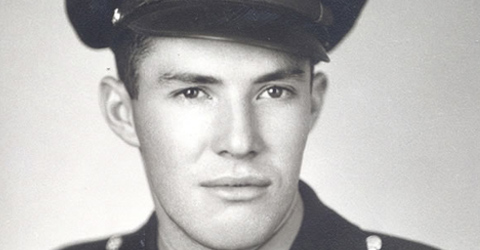
Bert Stiles
Army Corporal
EUROPEAN THEATER: North Africa
RANK & DIVISION: Army Corporal, 39th Infantry, 9th Division, Company H
Archie is a hard-working, quiet young man who worked two jobs while attending high school, tending his family farm, hunting for food and looking after his eight younger siblings. When the peacetime draft was instituted in the fall of 1940 Archie was the first person in his town to be called up. He was almost immediately shipped off to Ft. Bragg, NC, for basic training. The attack on Pearl Harbor and America's subsequent entrance into the war was a shocking experience for Archie. His simple background had left him with no real sense of the impending war, and no way to understand the full scope of it. After he is sent to North Africa, Archie writes home to his family during a quiet evening, telling them that he "thinks the war is coming to an end." He has no idea that North Africa alone is not "the war" and it is most certainly not "coming to an end."

Bert Stiles
Denver, Colorado
8th Air Force Bomber & Fighter Pilot (B-17 Bomber, P-51 Mustang)
EUROPEAN THEATER: Air war over Europe
RANK & DIVISION: Army Air Force- Second Lieutenant , 401st Bomb Squadron, 91st Bomb Group, then 505th Fighter Squadron, 339th Fighter Group
The artistic, creative writer, Bert describes himself as "a dreamer, a wistful seeker" whose short stories captured the attention of publishing giants in New York before the outbreak of WWII. Bert enlists in the Air Force almost immediately after Pearl Harbor, but is conflicted about his decision. Although he is a pacifist who feels that "we aren't solving anything with this war," he realizes "there is a time when every man must fight."
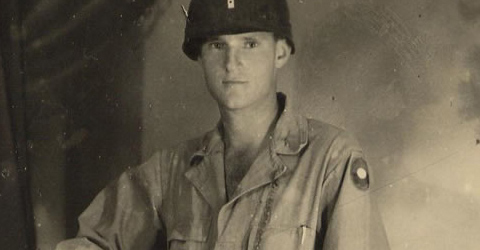
Charles Scheffel
8th Air Force Bomber & Fighter Pilot (B-17 Bomber, P-51 Mustang)
EUROPEAN THEATER: Air war over Europe
RANK & DIVISION: Army Air Force- Second Lieutenant , 401st Bomb Squadron, 91st Bomb Group, then 505th Fighter Squadron, 339th Fighter Group
The artistic, creative writer, Bert describes himself as "a dreamer, a wistful seeker" whose short stories captured the attention of publishing giants in New York before the outbreak of WWII. Bert enlists in the Air Force almost immediately after Pearl Harbor, but is conflicted about his decision. Although he is a pacifist who feels that "we aren't solving anything with this war," he realizes "there is a time when every man must fight."

Charles Scheffel
Enid, Oklahoma
Army Captain
EUROPEAN THEATER: North Africa, Sicily, Operation Dragoon, Push into Germany
RANK & DIVISION: Entered as 2nd Lieutenant, promoted to Captain after liberation of Paris, Company C, 39th Infantry Reg., 9th Army
Charles is an athletic and intelligent perfectionist, a hard-working all-American guy raised during the Depression who is concerned about carrying on his family's tradition of military service. He's used to being big man on campus, so when he's assigned to train with an experienced British army unit, he isn't accustomed to playing second string. And when he first gets into combat, Charles' naive illusions are immediately shattered. Facing the pragmatic pressures of a combat command, Charles quickly realizes his decisions can literally mean the difference between life and death for his men. By the time he makes it to Germany, he can see that there is no glory in winning, only in surviving.
Army Captain
EUROPEAN THEATER: North Africa, Sicily, Operation Dragoon, Push into Germany
RANK & DIVISION: Entered as 2nd Lieutenant, promoted to Captain after liberation of Paris, Company C, 39th Infantry Reg., 9th Army
Charles is an athletic and intelligent perfectionist, a hard-working all-American guy raised during the Depression who is concerned about carrying on his family's tradition of military service. He's used to being big man on campus, so when he's assigned to train with an experienced British army unit, he isn't accustomed to playing second string. And when he first gets into combat, Charles' naive illusions are immediately shattered. Facing the pragmatic pressures of a combat command, Charles quickly realizes his decisions can literally mean the difference between life and death for his men. By the time he makes it to Germany, he can see that there is no glory in winning, only in surviving.
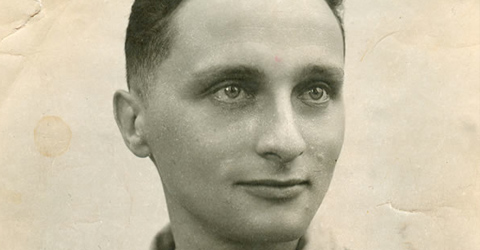
Jack Werner
Vienna, Austria
U.S. Army Sergeant
PACIFIC THEATER: Attu, Kwajalein, Leyte Gulf, Okinawa
RANK & DIVISION: Entered as a Private, earned stripes after Kwajalein. 1st Sergeant, Army 7th Infantry, 13th Combat Engineers, H and S Company
A politically aware Jewish émigré, Jack fled from Austria after Hitler took over the country. His real name is Hans Werner, but when he arrives in America he changes it to Jack. "Hans just sounded far too German, and I certainly didn't want that." Jack enlists in the U.S. Army months before Pearl Harbor, determined to fight the fascism that forced him from his home. But once he enlists, his distinctly European views about obedience and leadership cause him to see many American troops as "undisciplined" and he is stunned by other soldiers' open criticism of military leaders. As he enters the Pacific theater to fight against the Japanese he realizes his "undisciplined" fellow soldiers are also fiercely independent, a trait that he comes to respect.
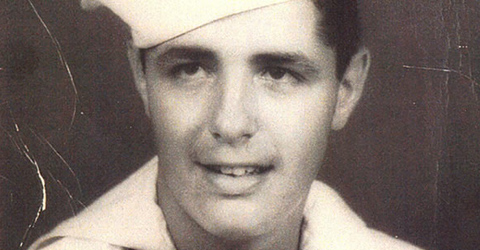
Jack Yusen
U.S. Army Sergeant
PACIFIC THEATER: Attu, Kwajalein, Leyte Gulf, Okinawa
RANK & DIVISION: Entered as a Private, earned stripes after Kwajalein. 1st Sergeant, Army 7th Infantry, 13th Combat Engineers, H and S Company
A politically aware Jewish émigré, Jack fled from Austria after Hitler took over the country. His real name is Hans Werner, but when he arrives in America he changes it to Jack. "Hans just sounded far too German, and I certainly didn't want that." Jack enlists in the U.S. Army months before Pearl Harbor, determined to fight the fascism that forced him from his home. But once he enlists, his distinctly European views about obedience and leadership cause him to see many American troops as "undisciplined" and he is stunned by other soldiers' open criticism of military leaders. As he enters the Pacific theater to fight against the Japanese he realizes his "undisciplined" fellow soldiers are also fiercely independent, a trait that he comes to respect.

Jack Yusen
New York, New York
Navy Seaman
PACIFIC THEATER: Home Front, Atlantic sub scare, Leyte Gulf
RANK & DIVISION: Navy-Seaman 1st Class, USS Samuel B. Roberts, (Destroyer escort, Butler class)
A funny, likable kid, Jack was raised in Queens, and has an unmistakable New York accent to prove it. When he joins the Navy at the end of 1943 Jack is the ultimate rookie, wet behind both ears and far too young to be tangling with U-boats. In October 1944 Jack finds himself fighting against impossible odds off the coast of the Philippines. His ship is sunk, and he and his shipmates are left floating in shark-infested waters for 72 hours. The same happy-go-lucky attitude that made him seem inexperienced becomes his greatest asset during this ultimate test.
Navy Seaman
PACIFIC THEATER: Home Front, Atlantic sub scare, Leyte Gulf
RANK & DIVISION: Navy-Seaman 1st Class, USS Samuel B. Roberts, (Destroyer escort, Butler class)
A funny, likable kid, Jack was raised in Queens, and has an unmistakable New York accent to prove it. When he joins the Navy at the end of 1943 Jack is the ultimate rookie, wet behind both ears and far too young to be tangling with U-boats. In October 1944 Jack finds himself fighting against impossible odds off the coast of the Philippines. His ship is sunk, and he and his shipmates are left floating in shark-infested waters for 72 hours. The same happy-go-lucky attitude that made him seem inexperienced becomes his greatest asset during this ultimate test.
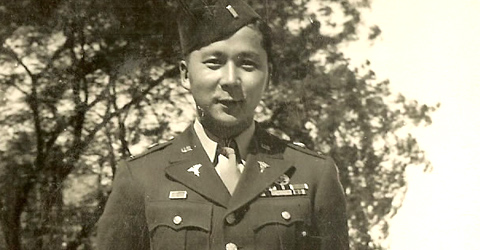
Jimmie Kanaya
Portland, Oregon
Army Medic (Retired as Colonel)
EUROPEAN THEATER: Italy, Southern France, POW, Liberation
RANK & DIVISION: Army Medic, 3rd Battalion, 442nd Japanese Reg.
The son of Japanese immigrants, Jimmie is devoted to both his family and his country. But his dual loyalties are challenged by the racist backlash of post-Pearl Harbor hysteria. In early 1942, Jimmie's parents are relocated to an internment camp and although he is already in the army, the government initially treats him as a suspect and refuses to allow him to actively fight. In 1943, Jimmie joins the 442nd Regimental Combat Team, a special unit made up of Japanese-American soldiers. Despite his best intentions to set an example of excellence in service, things tend to go wrong for Jimmie in combat, but he earns a Silver Star just months before he is captured by German soldiers. After multiple failed escape attempts, he is eventually liberated at the end of the war.
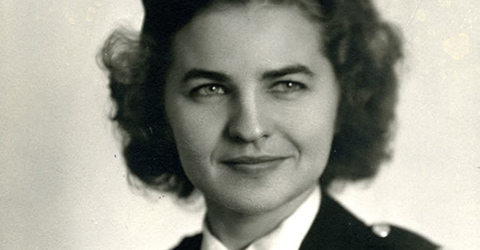
June Wandrey
Army Medic (Retired as Colonel)
EUROPEAN THEATER: Italy, Southern France, POW, Liberation
RANK & DIVISION: Army Medic, 3rd Battalion, 442nd Japanese Reg.
The son of Japanese immigrants, Jimmie is devoted to both his family and his country. But his dual loyalties are challenged by the racist backlash of post-Pearl Harbor hysteria. In early 1942, Jimmie's parents are relocated to an internment camp and although he is already in the army, the government initially treats him as a suspect and refuses to allow him to actively fight. In 1943, Jimmie joins the 442nd Regimental Combat Team, a special unit made up of Japanese-American soldiers. Despite his best intentions to set an example of excellence in service, things tend to go wrong for Jimmie in combat, but he earns a Silver Star just months before he is captured by German soldiers. After multiple failed escape attempts, he is eventually liberated at the end of the war.

June Wandrey
Wautoma, Wisconsin
Army Nurse
EUROPEAN THEATER: North Africa, Sicily, Push into Germany, Concentration Camp Liberation
RANK & DIVISION: Army Nurse Corps, First Lieutenant
June begins the war as a fun-loving young woman with a fierce sense of independence that is decades ahead of her time. When the U.S. enters the war she enlists almost immediately, but she is unprepared for the horrors and poor conditions she will face overseas. June battles not only the Nazis, but also hunger, exhaustion, inclement weather and sickness. She often works 18-hour shifts, 7 days a week, caring for the sick, the wounded and the dying. As the war wears on, the daily brutalities tear at her heart, making it harder and harder to keep her fun-loving spirit. But while the constant misery threatens to overwhelm her, June comes to learn that her good-natured attitude is often her most valuable medicine.
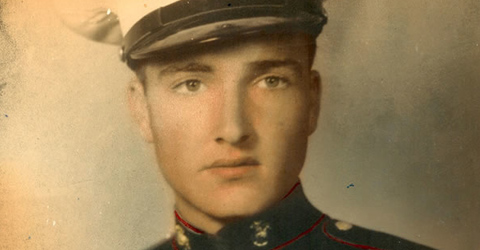
Nolen Marbrey
Army Nurse
EUROPEAN THEATER: North Africa, Sicily, Push into Germany, Concentration Camp Liberation
RANK & DIVISION: Army Nurse Corps, First Lieutenant
June begins the war as a fun-loving young woman with a fierce sense of independence that is decades ahead of her time. When the U.S. enters the war she enlists almost immediately, but she is unprepared for the horrors and poor conditions she will face overseas. June battles not only the Nazis, but also hunger, exhaustion, inclement weather and sickness. She often works 18-hour shifts, 7 days a week, caring for the sick, the wounded and the dying. As the war wears on, the daily brutalities tear at her heart, making it harder and harder to keep her fun-loving spirit. But while the constant misery threatens to overwhelm her, June comes to learn that her good-natured attitude is often her most valuable medicine.

Nolen Marbrey
Huntsville, Alabama
Marine Corps Private
PACIFIC THEATER: New Britain, Peleliu, Okinawa
RANK & DIVISION: Marines, Corporal, 3rd battalion, 5th marines, 1st division, K Co.
A hormone-filled Alabama boy, Nolen loves three things: drinking, swearing and chasing women. He enlists with the Marines because in Huntsville, "nobody has a future." When he's thrown into intense combat, Nolan's hard-partying attitude is quickly chastened. On his first patrol into enemy territory his squad comes under heavy fire, and three of his friends are killed. Meanwhile, Nolen and the one other survivor barely make it back alive. In the months to come Nolen participates in brutal fighting on two more islands, suffering severe wounds in the process. His descriptions are violently graphic and brutally honest, revealing the shocking, bloody realities of war.
Marine Corps Private
PACIFIC THEATER: New Britain, Peleliu, Okinawa
RANK & DIVISION: Marines, Corporal, 3rd battalion, 5th marines, 1st division, K Co.
A hormone-filled Alabama boy, Nolen loves three things: drinking, swearing and chasing women. He enlists with the Marines because in Huntsville, "nobody has a future." When he's thrown into intense combat, Nolan's hard-partying attitude is quickly chastened. On his first patrol into enemy territory his squad comes under heavy fire, and three of his friends are killed. Meanwhile, Nolen and the one other survivor barely make it back alive. In the months to come Nolen participates in brutal fighting on two more islands, suffering severe wounds in the process. His descriptions are violently graphic and brutally honest, revealing the shocking, bloody realities of war.
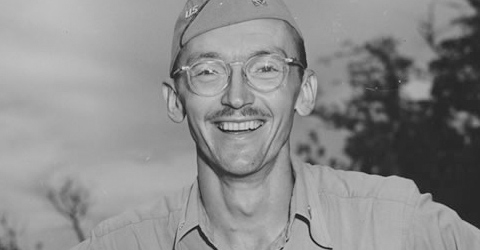
Richard Tregaskis
Elizabeth, New Jersey
War Correspondent, International News Service
PACIFIC & EUROPEAN THEATERS: Guadalcanal, Sicily, Italy
Richard is a hard-working, tenacious reporter for the New York-based International News Service. Ineligible for the draft because of his Type 1 diabetes, Richard jumps at the opportunity to report on the war, his only ticket to the front line. The graphic descriptions in his best-selling book-turned-movie Guadalcanal Diary open the public's eyes to the harsh realities of war. With his attention to detail and willingness to put himself in harm's way, the rookie combat reporter soon becomes a household name. But his new-found fame only makes him hunger more for the adrenaline of combat. In the European theater, he starts taking risks. After several close calls he is finally side-lined by a piece of shrapnel that gets lodged in his brain. He's out of the war before it's over.
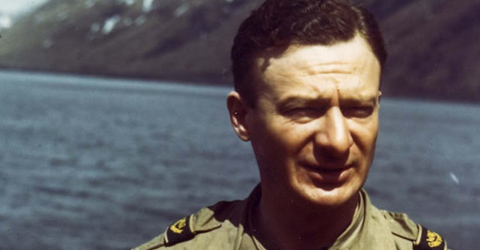
Robert Sherrod
War Correspondent, International News Service
PACIFIC & EUROPEAN THEATERS: Guadalcanal, Sicily, Italy
Richard is a hard-working, tenacious reporter for the New York-based International News Service. Ineligible for the draft because of his Type 1 diabetes, Richard jumps at the opportunity to report on the war, his only ticket to the front line. The graphic descriptions in his best-selling book-turned-movie Guadalcanal Diary open the public's eyes to the harsh realities of war. With his attention to detail and willingness to put himself in harm's way, the rookie combat reporter soon becomes a household name. But his new-found fame only makes him hunger more for the adrenaline of combat. In the European theater, he starts taking risks. After several close calls he is finally side-lined by a piece of shrapnel that gets lodged in his brain. He's out of the war before it's over.

Robert Sherrod
Thomas County, Georgia
TIME Magazine War Correspondent
PACIFIC THEATER: Attu, Tarawa, Saipan, Iwo Jima, Okinawa
At the start of the war, Robert is an experienced reporter with TIME magazine. But when he first travels to the Pacific, he is stunned by the tenacity and fanaticism of the Japanese enemy he encounters. His press reports about the terrible nature of this new enemy are meant to warn what he sees as a 'complacent America' of the difficulties of the coming war. Only after Sherrod's reports on the Japanese resistance at Saipan does he think America is finally coming to grips with what they're up against--and what it will take to win the peace. Strongly patriotic, Robert firmly believes that the Japanese will never surrender, and will have to be exterminated before the U.S. can claim victory.
TIME Magazine War Correspondent
PACIFIC THEATER: Attu, Tarawa, Saipan, Iwo Jima, Okinawa
At the start of the war, Robert is an experienced reporter with TIME magazine. But when he first travels to the Pacific, he is stunned by the tenacity and fanaticism of the Japanese enemy he encounters. His press reports about the terrible nature of this new enemy are meant to warn what he sees as a 'complacent America' of the difficulties of the coming war. Only after Sherrod's reports on the Japanese resistance at Saipan does he think America is finally coming to grips with what they're up against--and what it will take to win the peace. Strongly patriotic, Robert firmly believes that the Japanese will never surrender, and will have to be exterminated before the U.S. can claim victory.
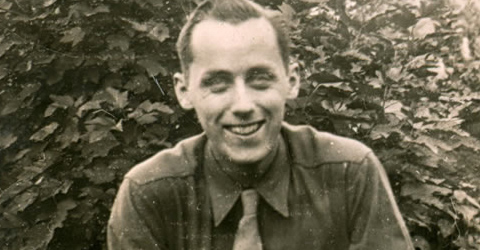
Rockie Blunt
Worcester, Massachusetts
Army Infantryman
EUROPEAN THEATER: Push into Germany, Battle of the Bulge, Rhineland, Concentration Camp Liberation
Rockie has a darkness about him, and is not given to making friends. When the aspiring jazz drummer is drafted, he goes to the army with no sense of greater mission other than perhaps bringing back some Nazi souvenirs. He enters the war with a thrill-seeking, daredevil attitude and though initially shocked by the incredible violence and horror he encounters, he quickly develops a grim attitude in which "killing becomes almost like a sport" and items stripped from the bodies of the dead are "souvenirs" to be sought after and kept. But as he battles his way across Europe and into the heart of Hitler's Third Reich, Rockie gradually finds himself caught up in an internal battle in which he must confront his own young ideas of humanity and righteousness.
Army Infantryman
EUROPEAN THEATER: Push into Germany, Battle of the Bulge, Rhineland, Concentration Camp Liberation
Rockie has a darkness about him, and is not given to making friends. When the aspiring jazz drummer is drafted, he goes to the army with no sense of greater mission other than perhaps bringing back some Nazi souvenirs. He enters the war with a thrill-seeking, daredevil attitude and though initially shocked by the incredible violence and horror he encounters, he quickly develops a grim attitude in which "killing becomes almost like a sport" and items stripped from the bodies of the dead are "souvenirs" to be sought after and kept. But as he battles his way across Europe and into the heart of Hitler's Third Reich, Rockie gradually finds himself caught up in an internal battle in which he must confront his own young ideas of humanity and righteousness.
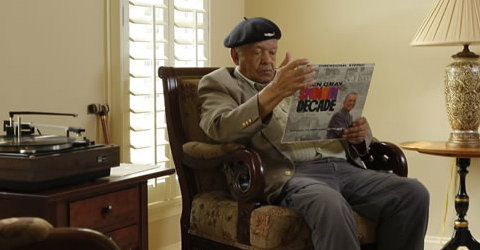
Shelby Westbrook
Marked Tree, Arkansas
Tuskegee Fighter Pilot (P-51 Mustang)
EUROPEAN THEATER: Air War over Europe
RANK & DIVISION: Army Air Force- First Lieutenant, 99th Squadron, 332nd Fighter Group, 15th Air Force
Shelby is a self-sufficient young man with an inner-strength born out of early tragedy. When his parents died, Shelby was just 12 years old. He moved from his small town home to live with his brother in the big city of Toledo, OH, where he attended an integrated high school, free of the sting of racial prejudice. After Pearl Harbor, he's keen to sign up for the nation's first all-black air corps. It is only when he enters the U.S. military that Shelby's eyes are opened to racial injustice. Shelby decides to be the best pilot in the entire war--convinced that his actions will be the most eloquent testament to his right to equal treatment.
Tuskegee Fighter Pilot (P-51 Mustang)
EUROPEAN THEATER: Air War over Europe
RANK & DIVISION: Army Air Force- First Lieutenant, 99th Squadron, 332nd Fighter Group, 15th Air Force
Shelby is a self-sufficient young man with an inner-strength born out of early tragedy. When his parents died, Shelby was just 12 years old. He moved from his small town home to live with his brother in the big city of Toledo, OH, where he attended an integrated high school, free of the sting of racial prejudice. After Pearl Harbor, he's keen to sign up for the nation's first all-black air corps. It is only when he enters the U.S. military that Shelby's eyes are opened to racial injustice. Shelby decides to be the best pilot in the entire war--convinced that his actions will be the most eloquent testament to his right to equal treatment.
WATCH WWII IN HD SERIES >>



ABOUT MYTHBUSTERS
Hosted by Jamie Hyneman and Adam Savage -- and co-hosted by Tory Belleci, Kari Byron and Grant Imahara -- the MYTHBUSTERS mix scientific method with gleeful curiosity and plain old-fashioned ingenuity to create their own signature style of explosive experimentation.
MEET THE MYTHBUSTERS

Hailing from Indiana farm country, JAMIE HYNEMAN is a multifaceted man: He's been a wilderness survival expert, boat captain, diver, linguist, animal wrangler, machinist and cook, to name but a few.
Jamie earned a degree in Russian languages and ran a sailing/diving charter business in the Caribbean for several years before he moved over to the visual-effects industry. After working for several special-effects companies, Jamie found his way to Colossal Pictures' model shop, where he managed the production of models and special effects for hundreds of commercials and movies. Then, 18 years ago, Jamie took over the shop and created M5 INDUSTRIES INC.
Jamie has worked on more than 800 commercials for major automobile manufacturers, soft-drink companies, athletic shoes and numerous other products. And in the midst of all this activity, Jamie's company diversified into toy prototyping and research and development in a variety of other areas as well. The holder of several patents and the winner of numerous industry awards, Jamie is also a long-standing Screen Actors Guild member.
Today, while MythBusters occupies the majority of Jamie's professional activity, M5 is actively developing cutting edge technologies for a variety of industries, ranging from defense to green vehicle design.

ADAM SAVAGE has spent his life gathering skills that allow him to take what's in his brain and make it real. He's built everything from ancient Buddhas to futuristic weapons, from spaceships to dancing vegetables, from fine art sculptures to animated chocolate — and just about anything else you can think of.
The son of a filmmaker/painter and a psychotherapist, Adam has been making his own toys since he was allowed to hold scissors. Having held positions as a projectionist, animator, graphic designer, carpenter, interior and stage designer, toy designer, welder, and scenic painter, he's worked with every material and in every medium he could fathom — metal, paper, glass, plastic, rubber, foam, plaster, pneumatics, hydraulics, animatronics, neon, glassblowing, mold-making and injection molding to name just a few.
Since 1993, Adam was concentrated on the special effects industry, honing his skills through more than 100 television commercials and a dozen feature films, including Star Wars Episode I: The Phantom Menace and Episode II: Attack of the Clones, Galaxy Quest, Terminator 3, A.I. and the Matrix sequels. He's also designed props and sets for Coca-Cola, Hershey's, Lexus and a host of New York and San Francisco theater companies.
Not only has he worked and consulted in the research and development division for toy companies and made several short films, but Adam has also acted in several films and commercials — including a Charmin ad, in which he played Mr. Whipple's stock boy, and a Billy Joel music video, "Second Wind," in which he drowns.
Today, in addition to co-hosting MythBusters, Adam teaches, lectures and consults on a variety of topics to students, business folks and everyday Joes. Somehow he also finds time to devote to his own art — his SCULPTURES have been showcased in over 40 shows in San Francisco, New York and Charleston, West Virginia.


KARI BYRON has trained to be on MythBusters since she was a child. By the age of 5 she was experimenting on her sister and using dolls as crash-test dummies. Luckily for her parents, they always caught her right before her little sister took a ride down a laundry chute or was the subject of an "around-the-world" attempt on the playground swings.
After graduating from San Francisco State University and traveling the world, Kari began her career as a sculptor and painter, holding successful exhibitions at some of San Francisco's leading galleries. "ARTIST" was only one of many hats she wore while searching for her place in the world. Her sculpting skills and love for odd jobs soon led her into the field of model-making and toy-prototyping, which led to a job with Jamie Hyneman at M5 INDUSTRIES. It was at M5 that Kari got her big break with MythBusters.
Kari brings a unique perspective to the show as an artist, a science chick and a working mom.

Electronics and radio-control specialist GRANT IMAHARA is a former animatronics engineer and model maker for Industrial Light & Magic, where he worked on such movies as The Lost World: Jurassic Park, Star Wars: Episode 1 - The Phantom Menace, Terminator 3: Rise of the Machines, A.I.: Artificial Intelligence and Van Helsing. Grant also worked on The Matrix Reloaded and Revolutions.
In addition to operating R2-D2 (one of only a handful of official operators), Grant has another claim to beloved-character fame: developing a custom circuit to cycle the Energizer Bunny's arm beats and ears at a constant rate. In fact, he's responsible for all the electronics installation and radio programming on the current generation of bunnies, even serving as the bunny's driver and crew supervisor on numerous commercials.
A native of Los Angeles, Calif., Grant earned a Bachelor of Science degree in electrical engineering from the University of Southern California. He's also the author of the book, Kickin' Bot: An Illustrated Guide to Building Combat Robots. His own machine, DEADBLOW, is a former BattleBots champion.


Ever since he was a child, TORY BELLECI knew he would work in the film industry. At age 11, his uncle gave him a Super 8 movie camera and he began making movies. Tory went on to San Francisco State University film school and graduated magnum cum-laude. In 1994 he started working with Jamie Hyneman, first as a stage manager, then quickly moving up the ranks.
In a few years' time, Tory started work at Industrial Light & Magic (ILM), building models for films including Star Wars: Episode 1 -The Phantom Menace and Star Wars: Episode 2 - Attack of the Clones. Some of his models include the pod racers and Federation battleships. Tory worked for ILM for eight years as a model builder, sculptor and painter. His special-effects work can also be seen in Starship Troopers, Sphere, Galaxy Quest, Bicentennial Man, Terminator 3, The Matrix, The Matrix Reloaded and Van Helsing. Tory also has written and directed his own short films, including the 1999 short SAND TROOPER, which played at the Slamdance Film Festival and also aired on the Sci-Fi Channel.
Tory has been with MythBusters since the beginning, first doing work behind the scenes and then becoming one of the show's co-hosts. Since being on the shows, he has jumped out of several planes, wake-boarded behind a cruise ship, been chased by a crocodile, stared down a bull and swam with the sharks.

KARI BYRON has trained to be on MythBusters since she was a child. By the age of 5 she was experimenting on her sister and using dolls as crash-test dummies. Luckily for her parents, they always caught her right before her little sister took a ride down a laundry chute or was the subject of an "around-the-world" attempt on the playground swings.
After graduating from San Francisco State University and traveling the world, Kari began her career as a sculptor and painter, holding successful exhibitions at some of San Francisco's leading galleries. "ARTIST" was only one of many hats she wore while searching for her place in the world. Her sculpting skills and love for odd jobs soon led her into the field of model-making and toy-prototyping, which led to a job with Jamie Hyneman at M5 INDUSTRIES. It was at M5 that Kari got her big break with MythBusters.
Kari brings a unique perspective to the show as an artist, a science chick and a working mom.

Electronics and radio-control specialist GRANT IMAHARA is a former animatronics engineer and model maker for Industrial Light & Magic, where he worked on such movies as The Lost World: Jurassic Park, Star Wars: Episode 1 - The Phantom Menace, Terminator 3: Rise of the Machines, A.I.: Artificial Intelligence and Van Helsing. Grant also worked on The Matrix Reloaded and Revolutions.
In addition to operating R2-D2 (one of only a handful of official operators), Grant has another claim to beloved-character fame: developing a custom circuit to cycle the Energizer Bunny's arm beats and ears at a constant rate. In fact, he's responsible for all the electronics installation and radio programming on the current generation of bunnies, even serving as the bunny's driver and crew supervisor on numerous commercials.
A native of Los Angeles, Calif., Grant earned a Bachelor of Science degree in electrical engineering from the University of Southern California. He's also the author of the book, Kickin' Bot: An Illustrated Guide to Building Combat Robots. His own machine, DEADBLOW, is a former BattleBots champion.

The daughter of a mechanical engineer, JESSI COMBS has always felt at home in the garage. It was while sitting by her father's side, watching and learning and eventually doing, that "daddy's little girl" developed her passion for building and racing cars.

BUSTER, one of the biggest stars ever, is the infamous stunt dummy on MythBusters.
Though he hails from humble beginnings, Buster grew up like any other little guy, with a love for sports and fast cars. But it was in drama club where Buster found his true talent. And so, after high school and a particularly well-reviewed performance as Yorick in a local production of Hamlet, Buster moved to Hollywood.
There, Buster took odd jobs to pay the bills between auditions. But soon enough, he landed his first commercial, for Insane Auto. It was his on-camera presence that caught the attention of MythBusters producers, then casting for the new Discovery Channel series. In 2003, Buster's big moment finally arrived when he was hired to drive the car in the jet-assisted Chevy myth. As castmate Tory Belleci recalls, "Everyone was just like, 'Who is that?' And someone said, 'That's Buster, man. That's Buster.'"
The show was a hit, and America went crazy for the dummy. But while Buster enjoyed the golden life, his fame soon put him on a crash course to reality. By 2005, as Buster's demands got bigger and grander — luxury trailers, stunt doubles, personal chefs — rumors of discord on the MythBusters set began to appear in tabloids. Eventually, hard living catapulted Buster to rock bottom, and only an intervention by his costars — and some time in the Henry Ford clinic — returned him to superstardom.
Today, the MythBusters are as big as ever, and its hunk made from junk is back as its star stuntman. Says castmate Grant Imahara, "He's a pro. There'll never be another one like him ... well, until we have to build a new one."